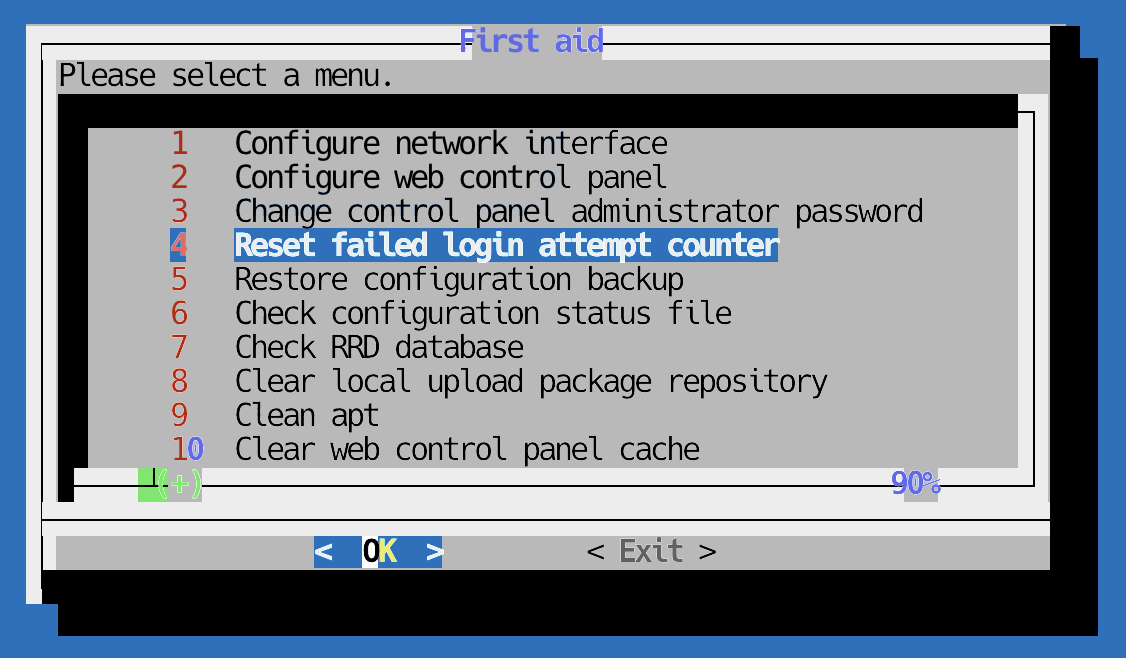

- #OPEN MEDIA VAULT INSTALL#
- #OPEN MEDIA VAULT ISO#
- #OPEN MEDIA VAULT DOWNLOAD#
- #OPEN MEDIA VAULT FREE#
Then we're good to unmount the disk so we can remove it with diskutil unmountDisk /dev/disk2Īnd we're good to take it out, put it in the Raspberry Pi and boot it up! Setting up openmediavault We create an empty file named ssh in the root of our new disk to tell Raspbian to enable ssh with touch /Volumes/boot/ssh sudo dd if=~/Downloads/-raspbian-buster-lite.img of=/dev/disk2 bs=1mĪfter this, our disk should contain almost everything we need, but we want to enable ssh by default so we can configure it over the network once we set it up. We'll be writing the file we just downloaded in our ~/Downloads/ folder to our disk device located in /dev/ with a block size of 1MB to speed up the process a little bit (instead of copying 1 bit at a time) with the command below. We can then write the Rasbian Lite image to our microSD card using dd which is a tool that copies one file to another bit-for-bit with no optimizations, compression, or anything else.
#OPEN MEDIA VAULT FREE#
So the identifer we'll being for my SD card is disk2 /dev/disk2 (external, physical):īefore we write, we need to make sure the disk is free to write to by unmounting it. On my Mac, the output looks something like this for my 8GB micro SD card. We need to find the disk number so we know what device to write to.ĭiskutil list should show us the list of disks accessible to our Mac, and we want to look for an identifier in the form of disk# that matches the size of our SD card without an s# which identify the partitions Then we need to get the new image onto our micro SD card so our Raspberry Pi can boot from it.
#OPEN MEDIA VAULT DOWNLOAD#
Below are my setup steps using MacOS Setting up the Raspbianįirst we need to fetch the Raspbian Lite image from the download page which will place the image in our ~/Downloads directory Setup is quite simple for anyone who has installed a raspberry pi OS before and has some basic command line/ssh familiarity thanks to the great guide they have for Raspberry Pi setups. I'd also be able to unload some large files to an SMB share so that I'd like to access occasionally but not clog up my hard drive. I decided to setup an old Raspberry Pi 2 model B I had laying around with OMV to have a centralized place on my network to make TimeMachine backups to from my MacBook so I wouldn't have to plugin to a physical disk every time I wanted to backup my files. These services among other things are offered through a user-friendly web interface simplifying storage services for homes and small businesses. It's still featureful offering things like NFS for *nix environments and SMB/CIFS for Windows/mixed environments, Docker, as well as plenty of plugins to support things like DLNA. It is useful in cases where something more feature-filled and battle-tested like FreeNAS might not be applicable because of a lack of computing power or the use of a less common CPU architecture like ARM.
#OPEN MEDIA VAULT ISO#
(b) Create Virtual machine on your current operating system using tools like Oracle Virtual Box and boot your Virtual machine using ISO of this operating system.Openmediavault (OMV) is a Linux distro that can be used to setup a Network Attached Storage (NAS). (a) Download OpenMediaVault 2.1and burn it to DVD/USB drive and boot your system using this DVD/USB.
#OPEN MEDIA VAULT INSTALL#
There are couples of ways through which you can initiate the install of this OS.


 0 kommentar(er)
0 kommentar(er)
